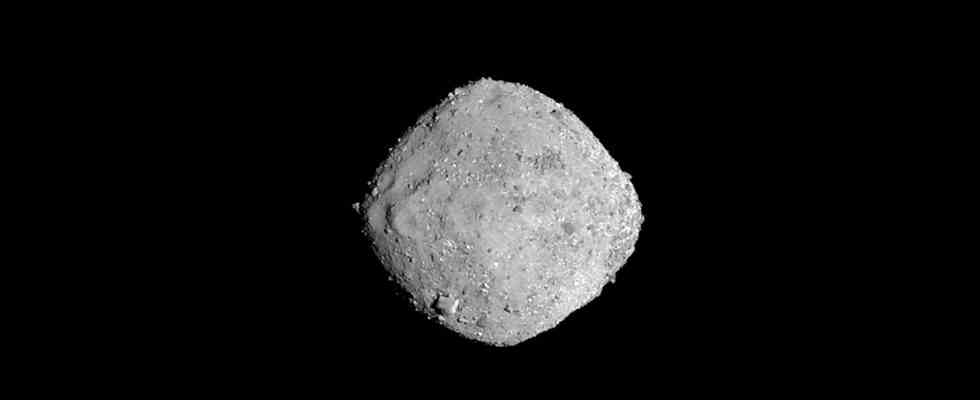Asteroid AP7 does not currently threaten to hit us because it remains “very far” from Earth when it crosses its orbit, said Scott Sheppard, astronomer at the Carnegie Institution for science.
Astronomers announced Monday that they have detected an asteroid about 1.5 kilometers large in the vicinity of Earth, which could with great bad luck crash into it in the distant future, causing planetary devastation.
Most asteroids of this size have already been discovered, scientists say, but this one has so far been hiding in the sun’s glare, making it particularly difficult to detect.
This asteroid, named 2022 AP7, “crosses Earth’s path, making it a potentially dangerous asteroid,” said Scott Sheppard, astronomer at the Carnegie Institution for science. However, it does not currently threaten to hit us, because it remains “very far” from the Earth when it crosses its orbit, he immediately reassured.
“A devastating impact on life as we know it”
The threat comes from the fact that like any asteroid, its trajectory will be slowly modified due to the gravitational forces exerted on it, in particular by the planets. Forecasts are therefore difficult over the very long term.
It is the “largest potentially dangerous object for the Earth discovered in the last eight years”, according to a press release from the American NOIRLab, which operates several observatories.
This NEO takes five years to circle the Sun, and is now several million kilometers from Earth at its closest.
The risk is therefore very hypothetical, but in the event of a collision, an asteroid of this size would have “a devastating impact on life as we know it”, explained Scott Sheppard. The dust thrown into the atmosphere would block the light of the Sun, cooling the planet and causing a mass extinction.
The discovery was made thanks to the Victor M. Blanco Telescope, in Chile, and its DECam instrument, initially developed to study dark matter. The results were published in the scientific journal The Astronomical Journal. Two other asteroids in this complicated area to observe have been discovered, including the closest known asteroid to the Sun. They pose no risk to the Earth.
To prepare for a bad discovery, NASA carried out a test mission at the end of September: a ship was propelled against a non-dangerous asteroid, proving that it was possible to modify its trajectory.

